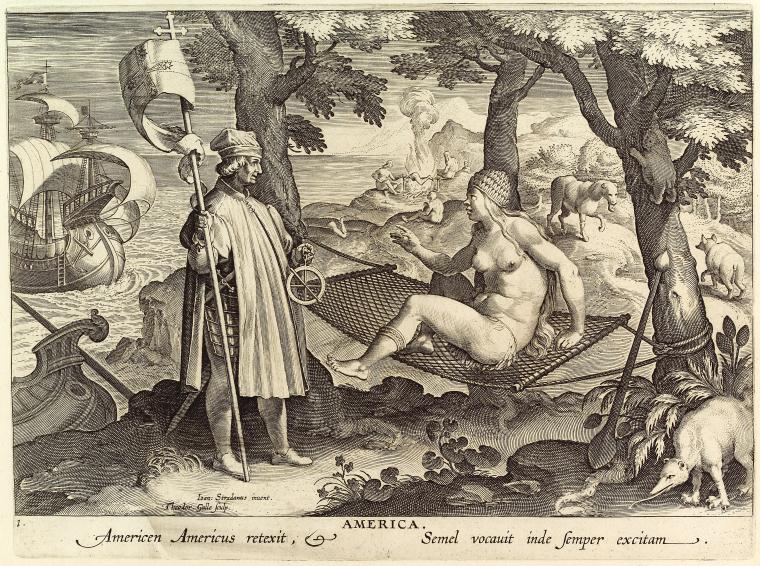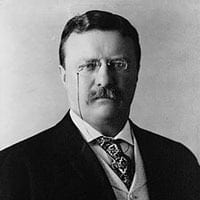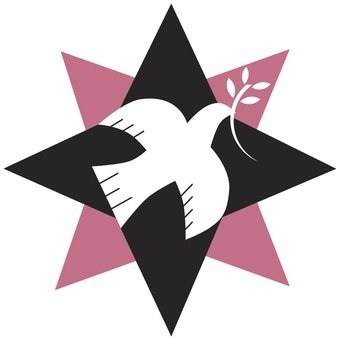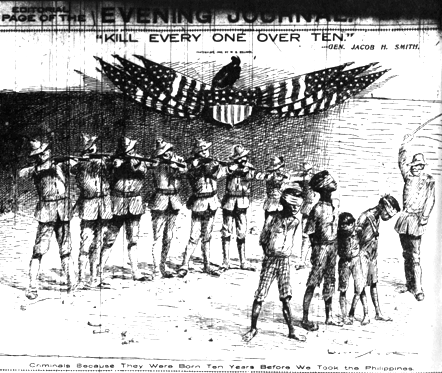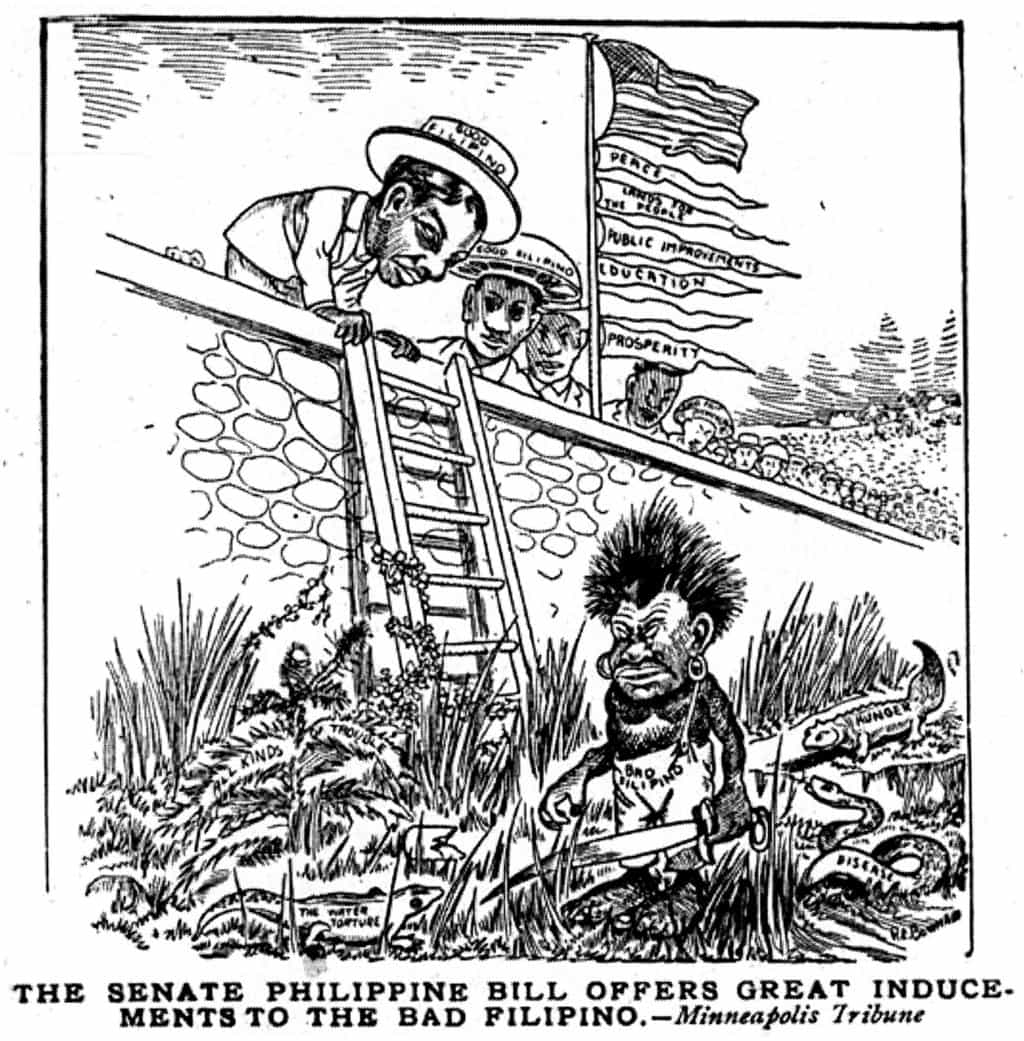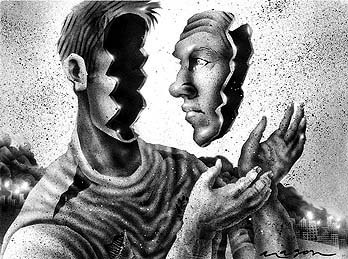Beginning in Class 4, we began a study of historical thinking skills based on the work of Sam Wineburg and the Stanford History Education Group (SHEG). We focussed on three key skills – Sourcing, Contextualizing and Corroborating. Students were assigned the task of designing their own historic thinking skills lesson based on that model and collecting them in a shared Google presentation. We took time in Class 5 to do some peer evaluation of the work. As a final assignment, students were asked to reflect on the process and use their lesson as the basis for a blog post. See them all here.
We Found a Lot of Naked People
Central Historical Question: What were the European perceptions of the natives in the New World?
Historical Skills: Corroborating
Topic: Colonization of the New World
Grade Level: 8th
Directions:
Have students read the two diary entries from Christopher Columbus and decide whether they think it is enough evidence for for historians to understand European perceptions of natives. Then, have them read the two additional documents from Amerigo Vespucci and the London Company and decide whether they corroborate Columbus and why.
Sources:
Question A: Explain why a historian might or might not believe that the excerpts from Columbus’ diary provide enough evidence to understand European perceptions of Native Americans.
Diary of Christopher Columbus. 1492
Thursday, 11 October.
Here follow the precise words of the Admiral: “As I saw that they were very friendly to us, and perceived that they could be much more easily converted to our holy faith by gentle means than by force, I presented them with some red caps, and strings of beads to wear upon the neck, and many other trifles of small value, wherewith they were much delighted, and became wonderfully attached to us. Afterwards they came swimming to the boats, bringing parrots, balls of cotton thread, javelins, and many other things which they exchanged for articles we gave them, such as glass beads, and hawk’s bells; which trade was carried on with the utmost good will. But they seemed on the whole to me, to be a very poor people. They all go completely naked, even the women, though I saw but one girl. All whom I saw were young, not above thirty years of age, well made, with fine shapes and faces; their hair short, and coarse like that of a horse’s tail, combed toward the forehead, except a small portion which they suffer to hang down behind, and never cut. Some paint themselves with black, which makes them appear like those of the Canaries, neither black nor white; others with white, others with red, and others with such colors as they can find. Some paint the face, and some the whole body; others only the eyes, and others the nose. Weapons they have none, nor are acquainted with them, for I showed them swords which they grasped by the blades, and cut themselves through ignorance. They have no iron, their javelins being without it, and nothing more than sticks, though some have fish-bones or other things at the ends. They are all of a good size and stature, and handsomely formed. I saw some with scars of wounds upon their bodies, and demanded by signs the of them; they answered me in the same way, that there came people from the other islands in the neighborhood who endeavored to make prisoners of them, and they defended themselves. I thought then, and still believe, that these were from the continent. It appears to me, that the people are ingenious, and would be good servants and I am of opinion that they would very readily become Christians, as they appear to have no religion. They very quickly learn such words as are spoken to them. If it please our Lord, I intend at my return to carry home six of them to your Highnesses, that they may learn our language. I saw no beasts in the island, nor any sort of animals except parrots.” These are the words of the Admiral.
Saturday, October 13
This is a large and level island, with trees extremely flourishing, and streams of water; there is a large lake in the middle of the island, but no mountains: the whole is completely covered with verdure and delightful to behold. The natives are an inoffensive people, and so desirous to possess any thing they saw with us, that they kept swimming off to the ships with whatever they could find, and readily bartered for any article we saw fit to give them in return, even such as broken platters and fragments of glass.
Source: Fordham University
Question B: Read the additional documents from Amerigo Vespucci and Virginia Company. Does each document support the diary excerpts from Columbus? If they cannot be used to support Columbus’ claims, explain why not.
Letter by Amerigo Vespucci, 1503
We found a lot of naked people. they have no laws, and no religion. They just live by nature. They own nothing, and share every thing. They have no country, borders or king. It seems that everyone is his own master.
They live together in huts, built without any metal. What a surprise, I have seen houses 220 feet long, and 30 feet wide that can hold 500 people. They sleep in hammocks of cotton; they sit on the ground and eat the roots of herbs, or fruits and fish.
They are cruel people, but I don’t understand why they go to war. They don’t fight for power or to take things from their enemies. When we asked them about this, they said they fought as payback for the murder of their families.
Source: Peter Pappas
Virginia Company of London, 1622
It will be easier to conquer them, than civilize them. They are a rude, barbarous, naked people, scattered in small villages. This would help us to defeat them. It would also make it tough to civilize them. We can conquer them all at once. Civilizing them is slow and will take much more effort.
We can have victory over them many ways– by force, surprise, and famine.We can burn their corn, boats, canoes, houses and fishing equipment. We can disrupt their hunting. That’s how they get most of their winter food. We can chase them with our horses and bloodhounds, and our big mastiff dogs will tear them apart.
Source: Peter Pappas
About the Assessment:
Students should be able to use the sources to figure out whether or not the sources are enough to make a judgement and whether or not they support one another and why.
Question A:
Students should note that while the source is very detailed, it is the account of only one man who was also known for bending the truth to achieve his aims. The account is, on the other hand, reliable in that it is written in the time period it describes by someone who experienced it first hand before anyone else, so his response is not marred by the bias of others before him. Regardless, what Columbus say may not be representative of all Europeans.
Question B:
Student should see that the two additional accounts support European perceptions of natives as backward and savage peoples though they are written years apart. They should also be able to cite specific similarities in the accounts, such as seemingly simple lifestyles and modest housing.
Reflection:
What I really enjoyed about creating this lesson using the SHEG model was how it genuinely encouraged students to think like historians through emphasis on sourcing, contextualizing, and corroborating. Students are given concrete ways to look at the sources and practice these skills in a way that is not intimidating, but that still allows them to use primary sources. It’s fantastic to see so many lessons that get students to engage with the material directly and make their own arguments instead of being told what to think from a textbook. I look forward to implementing some of these lesson plans and seeing how students feel about them as well.
American Adobo: The Fight for the Philippines
Lesson design by Samuel Kimerling
Eighth grade students will be asked to evaluate the evidence of historical documents as a means of deepening their understanding of the Philippine War. They will use the historical thinking skills of sourcing, corroboration, and contextualization.
photos credit: US Dept of State Office of the Historian
Directions:
Use the document below and your knowledge of history to answer the questions that follow.
Source:
An excerpt from President Theodore Roosevelt’s introduction to a special report by Secretary of War Howard Taft regarding the accomplishments of the U.S. Army in the Philippines from 1898-1908.
photo credit: Library of Congress
Source text (excerpt):
“It is a subject for just national gratification that such a report as this can be made. No great civilized power has ever managed with such wisdom and disinterestedness the affairs of a people committed by the accident of war to its hands. If we had followed the advice of the misguided persons who wished us to turn the islands loose and let them suffer whatever fate might befall them, they would have already passed through a period of complete and bloody chaos, and would now undoubtedly be the possession of some other power which there is every reason to believe would not have done as we have done; that is, would not have striven to teach them how to govern themselves or to have developed them, as we have developed them, primarily in their own interests.”
Question 1: Explain why a historian might question why Roosevelt’s praise for the military outcome in the Philippines may not be a “subject of just national gratification”?
Students will need to understand that there was major debate over imperialism during this time. Students will use the skills of sourcing and contextualization.
Question 2: Three documents are listed below. Explain whether each document supports or conflicts with the President’s view on the military success of the Philippine War.
Students will see the various facets of the for and anti-imperialist sentiment. Students will use skills of sourcing and corroboration.
a. 1901 Petition to the Senate and House of Representatives from the Philanthropic Committee of the Religious Society of Friends which advocates for making peace with the Filipino insurgents and granting their independence.
Source text (excerpt): “The Filipino people, we feel, have a right to look to this Republic not only as an example of free government, but for effective aid and support in the establishment and maintenance of institutions of their own, freely chosen by them, and adapted, in their judgement, to their circumstances and conditions. This the American people long ago claimed for themselves, and have never heretofore denied to others.”
photo credit: Society of Friends
b. Mark Twain’s essay, “To the Person Sitting in Darkness,” delivered to the New York Anti-Imperialist League in 1901.
Source text (excerpt):“True we have crushed a deceived and confiding people; we have turned against the weak and the friendless who trusted us; we have stamped out a just and intelligent and well-ordered republic; we have stabbed an ally in the back and slapped the face of a guest; we have bought a Shadow from an enemy that hadn’t it to sell; we have robbed a trusting friend of his land and his liberty…”
Published May 5, 1902 New York Journal “Kill Everyone Over Ten-Criminals Because They Were Born Ten Years Before We Took The Philippines”
c. Republican Senator Albert Beveridge’s “March of the Flag” campaign speech of September 16,1898.
“The Opposition tells us that we ought not to govern a people without their consent. I answer, The rule of liberty that all just government derives its authority from the consent of the governed, applies only to those who are capable of self-government. We govern the Indians without their consent, we govern our territories without their consent, we govern our children without their consent. How do they know that our government would be without their consent? Would not the people of the Philippines prefer the just, humane, civilizing government of this Republic to the savage, bloody rule of pillage and extortion from which we have rescued them?”
Minneapolis Tribune 1902
photo credit: Philippines 1900
Self Reflection
This project challenged us to design a lesson that encouraged students to think like a historian. Designing a lesson like this proved challenging to me as I am used to simply conveying information in a lesson. This model relies less on the transfer of information and more on the thought process. It was helpful to have the SHEG resources as a scaffold to help figure out what a good lesson looked like. I ended up spending a lot of time searching for primary sources and trying to figure out the best way to make them fit together to make a coherent question set. By the time I was done searching I had discovered and bookmarked some great sources for original documents. I would definitely give this type of project a try in the classroom, as I think making the student the historian is key to getting them to understand why history is important, and why we study it in school. Historical thinking is critical thinking which can be applied across disciplines and prove useful in life outside the classroom. Moving the classroom experience away from the transfer of information, and towards the acquisition of thinking skills, not only engages the student more, but prepares them better for the future.
Class 5: Historical Thinking Part II / Twitter #sschat
 This class leads off with a live demo of the #sschat on Twitter (Mondays 4-5 PM Pacific). Chats are archived here.
This class leads off with a live demo of the #sschat on Twitter (Mondays 4-5 PM Pacific). Chats are archived here.
Will use the event to begin a discussion of using Twitter to build a personal learning network (PLN). Students that have not already done so , will be asked to create Twitter accounts. More on Twitter hashtags here.
Next, we will turn our attention back to our exploration of teaching strategies for developing historical thinking skills. We will deconstruct The Battle of the Little Bighorn Lesson Plan from the Stanford History Education Group’s Reading Like A Historian and how it’s designed to teaching skills in Sourcing, Contextualizing and Corroborating. Keeping with our “western theme” we will take some time to develop lesson ideas for using “Across the Continent” an 1868 Currier & Ives print drawn by Frances Flora Palmer. [Above]
Finally we will turn do some peer editing of our shared Google presentation of collecting student-designed mini-lesson based on the Beyond the Bubble assessment model. Assignment | Product
Assignment for Class 6 – Shared Google presentation should be done by bed time 9/24. Blog post due by next class.
- Take the peer feedback and do a final version of your mini-lesson.
- Write a brief reflection on the process – it could include your take on historic thinking, the specific lesson model borrowed from SHEG, working with a shared Google presentation, peer review process, etc.
- Take all the content of your lesson plus the reflection and post it to our blog as your second authored post.
Reading assignment: Snapshot of a modern learner in SmartBlog on Education
Image credit: “Across the Continent” 1868 Currier & Ives print drawn by Frances Flora Palmer Newberry Library

